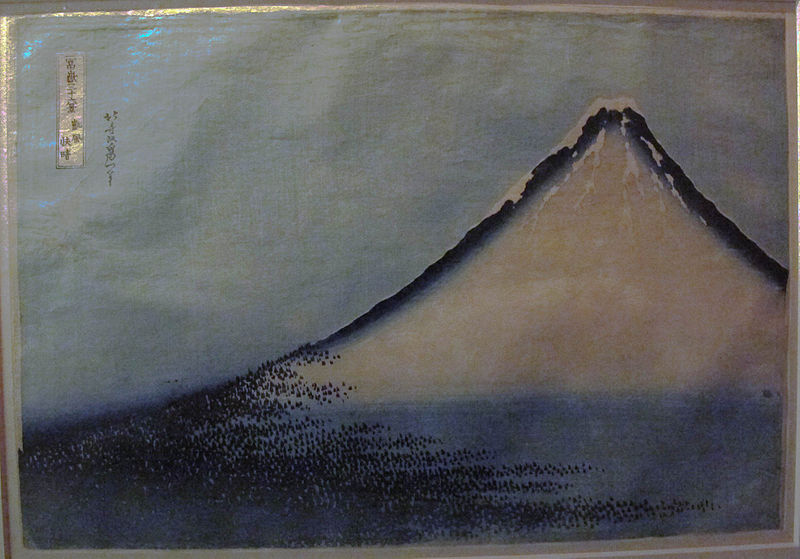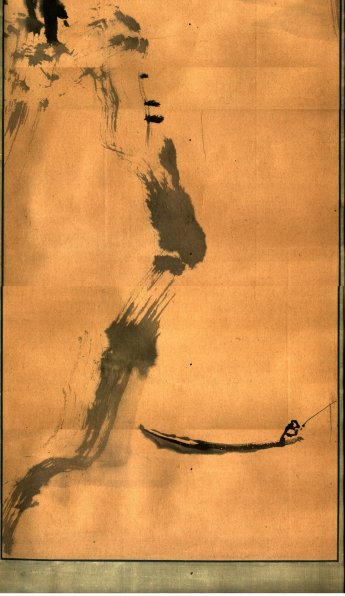
“Our being-in-the-world is in fact a two-layered being-in-the world. In short, the world as a comprehensive space of meaning is in turn located within the world of a limitless openness, a hollow-space of no-meaning that is without limits. Insofar as we are in the world, we are located within this limitless openness. Yet, since the world of language is layered upon this world of limitless openness, often, indeed usually, we unwittingly remain bound by the delimiting power of language and the framework of relations of meaning” (Ueda Shizuteru).
Following a three-year period of study in Marburg, at the end of which he published his dissertation on Meister Eckhart, Ueda, back in Japan, turned his attention to Zen, on which he had been invited to write “Meister Eckhart and Zen” as an appended chapter to his published dissertation. Just as his Zen experience had shaped his understanding of Eckhart’s mysticism, Ueda’s time in Germany, and his excellent command of the German language, led him to study Martin Heidegger’s works side by side with Nishida Kitaro’s Zen inspired philosophy. Ueda’s elucidation of his concept of niju-sekai-nai-sonzai (Being-in-the-Twofold World or Twofold Being-in-the-World) draws both on the thought of Heidegger and that of Nishida.
Heidegger’s Offenheit and Nishida’s “Place of Absolute Nothingness”
The term “being-in-the-world” is an obvious borrowing from Heidegger’s terminology.” As Hironobu Ota explains, “Ueda follows Heidegger’s claim that human being as an individual is not an encapsulated ego but ‘being-in-the-world’ (In-der-Welt-sein).” Ueda, however, “insists that this world is, in turn, ‘located within’ a ‘hollow expanse’ (koku, a traditional Buddhist term for the ‘empty space of non-obstruction’) which transcends and envelops this world.” Here, Ueda is borrowing from both Heidegger’s concept of Offenheit and Nishida’s concept of “place of absolute nothingness” (zettaimu-no-basho).” Ota writes that “Ueda treats the concept of world through an interpretation of Heidegger and the concept of self through the philosophy of Nishida … For example, the idea of being ‘located within’ comes from Nishida’s philosophy of ‘place of absolute nothingness’ (zettaimu-no-basho). Furthermore, the idea of ‘hollow expanse’ is a synthesis of Nishida’s ‘place’ and Heidegger’s ‘openness’ (Offenheit).”
On the other hand, it is clear that Ueda is also rearticulating Nishitani Keiji’s concept of the field of consciousness/reason versus the field of sunyata (emptiness). Both Nishitani and Ueda have been following in the footsteps of Nishida’s concept of “basho” (place, locus) in using a spatial metaphor to convey what Mahayana Buddhism describes as a contrast between conventional and absolute truths. What was originally associated with a level of awakening – the non-enlightened versus the enlightened mind, according to your level of practice and realisation -, is now represented as existing at all times, whether we see it or not, which is congruent with the Buddhist doctrine which describes it as the non-actualised versus the actualised aspect of our original enlightenment.
“Exiting language and then exiting into language,” and “Being-in-the-Twofold World“
Within Ueda’s philosophy, Bret Davis notes that there is a direct relation between Ueda’s description of the inseparable movement of “exiting language and then exiting into language,” and the description of his idea of “being-in-the-Twofold World,” which he also called the “two-layered being-in-the-world.” In Ueda’s words:
“What I am calling ‘exiting language and then exiting into language’ is not a smooth and automatic movement. It is rather a movement consisting of a twofold breaking through: language is torn through into silence and silence is torn through into language. It is precisely this movement that is primordial experience, which altogether I understand as a living wellspring of the death and resuscitation of experience. […] In order to understand this movement, it is necessary to see that our being-in-the-world is in fact a two-layered being-in-the world. In short, the world as a comprehensive space of meaning is in turn located within the world of a limitless openness, a hollow-space of no-meaning that is without limits. Insofar as we are in the world, we are located within this limitless openness. Yet, since the world of language is layered upon upon this world of limitless openness, often, indeed usually, we unwittingly remain bound by the delimiting power of language and the framework of relations of meaning. Hence, the world of language alone is taken to be the world of our being-in-the-world, and the limitless openness which transcends and envelops this world remains closed off to us. […] [Where the] visible and linguistically defined world is taken to be the one and only world, the human subject that inhabits this world – either individually or collectively, and in various manners and levels – attempts to appropriate it as ‘my world’; and this is what gives rise to confrontations, conflicts, struggles, and distortions within this closed off world. This kind of being-in-the-world must be broken open by the true countenance of the world, so that the reality of human existence can be realized. […] If we take the original and fundamental structure of human existence – which takes place in this dynamic of ‘exiting language and then existing into language’ – to be a twofold being-in-the-world, then the being of the human should be understood as the double movement of going from the world into the limitless openness and then once again into the world.”
“I, in not being I, am I” and the “empty expanse”
Furthermore, Davis notes that this passage also shows Ueda’s “understanding of the true self as a movement of ‘I, in not being I, am I’ as correlating with “his conception of how the world in which this self exists is in turn situated within an ‘empty expanse’ (koku).” The true self many of us are looking for – in the common sense of the term – is not a specific set of inherent substantial characteristics that would reflect my specific “identity” in what Ueda also called the “A World” (the human world). The true self must include the “B World,” the empty-expanse within which the “A World” is located.
Sources:
Bret W. Davis – “The Contours of Ueda Shizuteru’s Philosophy of Zen,” in Tetsugaku Companion to Ueda Shizuteru, Ed. Ralf Müller, Raquel Bouso and Adam Loughnane (2022)
Hironobu Ota – “Twofold Being-in-the-World in Ueda’s Philosophy – On His Interpretation of Heidegger and Nishida” in Tetsugaku Companion to Ueda Shizuteru, Ed. Ralf Müller, Raquel Bouso and Adam Loughnane (2022)

